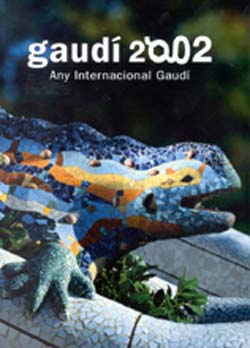Gaudi'. Exploring form
dal 26/3/2002 al 29/9/2002
Segnalato da
26/3/2002
Gaudi'. Exploring form
Museu d'Historia, Barcelona
The prevailing view of Gaudi' associates him with the surface aspect of his work. The spectacular forms, the variety of materials, the wealth of colours and the symbolic allusions mask the innermost dimension of his architecture, in which special attention is paid to the concepts of space, geometry, structure and construction.

Saló del Tinell, City History Museum. Barcelona
The prevailing view of Gaudà associates him with the surface aspect of his work. The spectacular forms, the variety of
materials, the wealth of colours and the symbolic allusions mask the innermost dimension of his architecture, in which
special attention is paid to the concepts of space, geometry, structure and construction. All the elements that support his
buildings are based, firstly, on the constructional logic and experimentation that generally proceed from GaudÃ's
determination to make the most of the static and aesthetic potential of the materials, and, secondly, on the use of a
geometry centred around ruled surfaces that does away with the compass and set square and which offers countless
possibilities in construction and forms. This is not a speculative geometry unrelated to reality, but one addressed at
construction and at finding practical solutions whilst taking into account the economy of form and stability of the buildings.
Gaudà was drawn towards the geometry of ruled surfaces by his analysis from his boyhood of natural forms (tree trunks,
bones, shells, etc.) and by his extraordinary mastery of the geometry of space, both of which led him to experiment in
three dimensions. It may be because of this that he soon began to work with small and large models, which he
manipulated either directly or through photographs until he achieved alternative forms that could easily be visualised, as
can be seen in his polyfunicular experiments of the church at the industrial village of Colònia Güell. GaudÃ's was a world of
testing, of trial and error and of corrections, which helped him to arrive at the solutions to the problems he was dealing
with, meaning that he proceeded in the opposite direction to that taken by professionals in the sphere of construction until
that time: Gaudà did not go from calculation and theory to the realisation of the project, but from the model to calculation,
and from thence to the plan and the construction. His vast knowledge of the skilled crafts and trades, which he had learnt
in the family workshop and alongside the finest craftsmen of the time, gave him the measure of the full range of these
crafts. Nevertheless, this should not lead us to ignore the high standards of scientific and technical training that he attained.
"GaudÃ. Exploring form" aims to look behind the austere as well as the visually appealing forms for the geometry that
articulates them, because it is this that will enable us to see that theory and practice, and art and technique, are present in
his work, in the same way that form and structure also come together in it.
The exhibition is divided into three sections:
1. THINKING. An audio-visual display that illustrates the essential concepts of the way Gaudà worked and reasoned
(space, lighting, form, structure, size, etc.)
2. RESEARCH. This section includes a series of life-size models that explain convex vaults, the intersection of
paraboloids, conoids, catenary arches, the double-twisted column, hyperbolic vaults and geometrical assemblies, together
with a series of smaller models and photos and infographic drawings that explain the origins and application of GaudÃ's
geometry.
3. WORK. A presentation of GaudÃ's main works through videos that highlight the most important parts of each building
associated with the themes of the exhibition.
The purpose of this exhibition is to analyse GaudÃ's handling of space and to explain his geometrical, structural and
constructional solutions, and though it appears to be addressed at specialists, it also aims to provide the general public
with an insight into the most common forms in the Gaudinian repertoire and with an understanding of the practical and
logical way in which this brilliant architect constructed complex forms.
Museu d'Història de la Ciutat, Pl Rei, 1 08002 Barcelona
Opening time: TUE-SAT:10-14/16-20/SUN/BANK
HOLIDAYS:10-14 H



